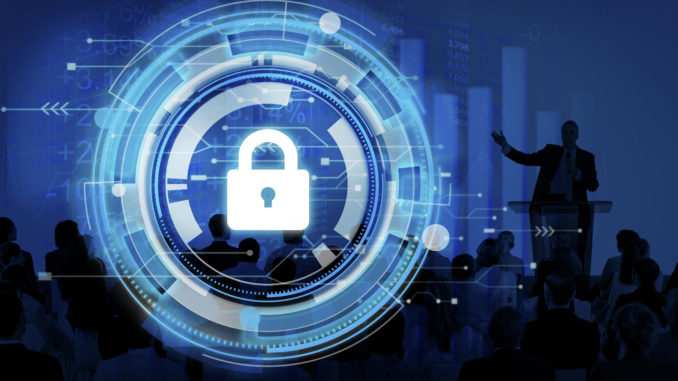
Cybersecurity has become a top business priority. Thanks to the ever increasing data incidents that stem from hacking, phishing, insider threat and employee’s negligence.
Besides, there are strict data privacy regulations which have started penalizing the organizations being found guilty of data incidents due to their failed cybersecurity protocols.
Cybercriminals are upping their game as the security industry deals with the threats and weight the benefits of paying ransoms. With the attacks get sophisticated and the government watching for security flaws, organizations are prioritizing creating cybersecurity strategies.
However, it is also important to be aware of new threats as well as those sophisticated security measures. Here I have outlined some top cybersecurity trends to watch out for in 2020.
AI Will Enhance Cybersecurity:
Machine learning is on the way to become a norm in this digital world. Whether it is a home or office, the presence of AI can be felt everywhere. And cybersecurity is no exception. AI will empower cybersecurity in coming years.
One study has found that 87 percent of US cybersecurity experts use AI in their practices.
How AI can enhance cybersecurity?
Certain algorithms can be set to detect the threats and respond accordingly. This way, it eliminates the need of manual checking. Besides, AI can report a threat to the business as soon as they occur. It can also help them identify blind-spots in their security, and promote situational awareness to assess security status.
Ransomware Attacks will Be More Personalized, More Focused:
Ransomware has always been a top threat over time. In 2020, it can be more dangerous than ever, thanks to the hackers who are using new ways to launch the attack.
According to a 2019 statement by McAfee, some hackers might come together to strengthen their hacking ecosystem. The ransomware creators have spearheaded their attacks. They have gone one step ahead by making their attacks more personalized, more focused.
They are constantly using new tools like advanced persistent threat or APT to track their target network. And this tool is often used to damage protection barriers like persistent backup to the cloud.
Organizations Will Feel the Need of Cybersecurity Budget:
Having fear of being attacked by hackers can be justified. Besides, the cybersecurity regulators are all set to penalize the organizations whose negligence led to the attack, pushing businesses to create a more safe and sound cybersecurity infrastructure. No wonder why 76% of organizations are looking to increase their budget for cybersecurity.
Security will Become a Top-level Concern:
As I have told you in the very first line that cybersecurity has become top business priority. It means that it is no more the concern associated with security professionals.
As cyber threats are getting more dangerous, you could be on the radar of a threat actor any time soon. A cyber attack not only damages your financials and data, but also shatters your reputation. Imagine the scenario when news outbreak on data incident at your organization.
Therefore, cybersecurity has become a board-level or C-level concern. Everyone in the leadership team should be aware of the cybersecurity and consequences as well. Implying prevention can work than trying to reducing the damages.
CFO should invest in cybersecurity that could pay off instantly if it means that you have prevented the threat.
The support from leadership means that the cybersecurity programs can be funded easily. As most tactics fail due to the lack of resources, you can immune your cybersecurity with a top-down approach and full support from the leadership.
Vendors to Comply with Data Privacy Guidelines:
According to HelpNet Security, nearly half of the firms that experienced a data incident were because of their reliable third parties.
It simply means that working with third-party vendors can risk your data, no matter how efficient security systems you have in place. Make sure to work with a vendor who has healthy security hygiene. They should comply with all of your security regulations to prevent the risk of a data incident.
The Demand of Cyber Insurance will be On Rise:
Cyber insurance is one of the key cybersecurity trends in 2020.
Wikipedia defines cyber-insurance as “a specialist insurance product used to protect businesses and individual users from Internet-based risks, and more generally from risks relating to information technology infrastructure and activities.”
Simply put, it is a form of insurance that provides coverage against data loss caused by cybercrimes.
While the insurance will financially protect you from data incidents, it won’t stop cyber attacks. It is also noteworthy that many companies are not cyber-insured.
Cyber liability insurance might not cover all of the damages; it can only help minimize the costs in case of an incident. It generally covers expenses that relate to first parties and claims by third parties as legal fees, business losses, investigation fees, and credit monitoring for customers if their data is stolen. Generally, insurance might not pay for ransomware.
Mobile Devices will be on the Radar:
Mobile devices are being used by over 90% people. The amount of business data stored in these devices is increasing with the number of devices. It’s an evident reason why mobile can be the primary target in 2020.
What makes it attractive for hackers?
Mobile devices like smartphones can block phishing emails. But they might not have strong security against malicious third-party apps, personal emails and SMSs being sent by a threat actor. Once they get access, they can steal the info easily.
So these are some cybersecurity trends to keep your eye on in 2020. Always assess your IT ecosystem to determine the potential risks as well as the ways to prevent them. Update your software, create strong passwords, take care of BYOD policy and protect your network. Make sure to educate your employees on cybersecurity as they are often the weakest link cybercriminals can exploit.
